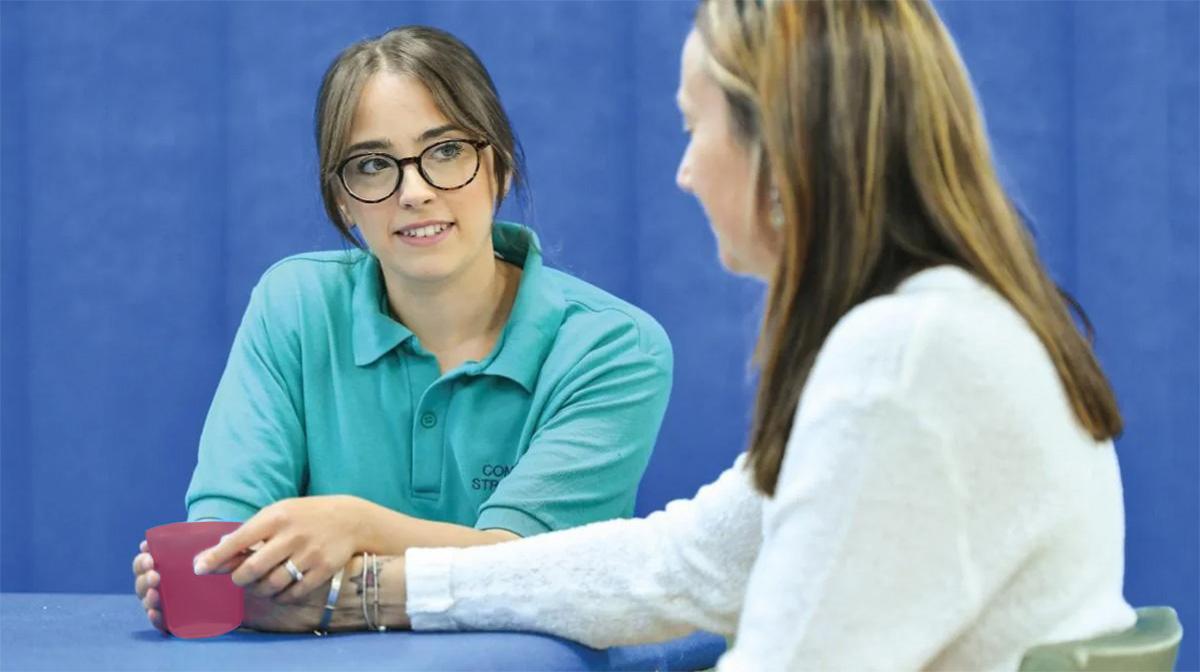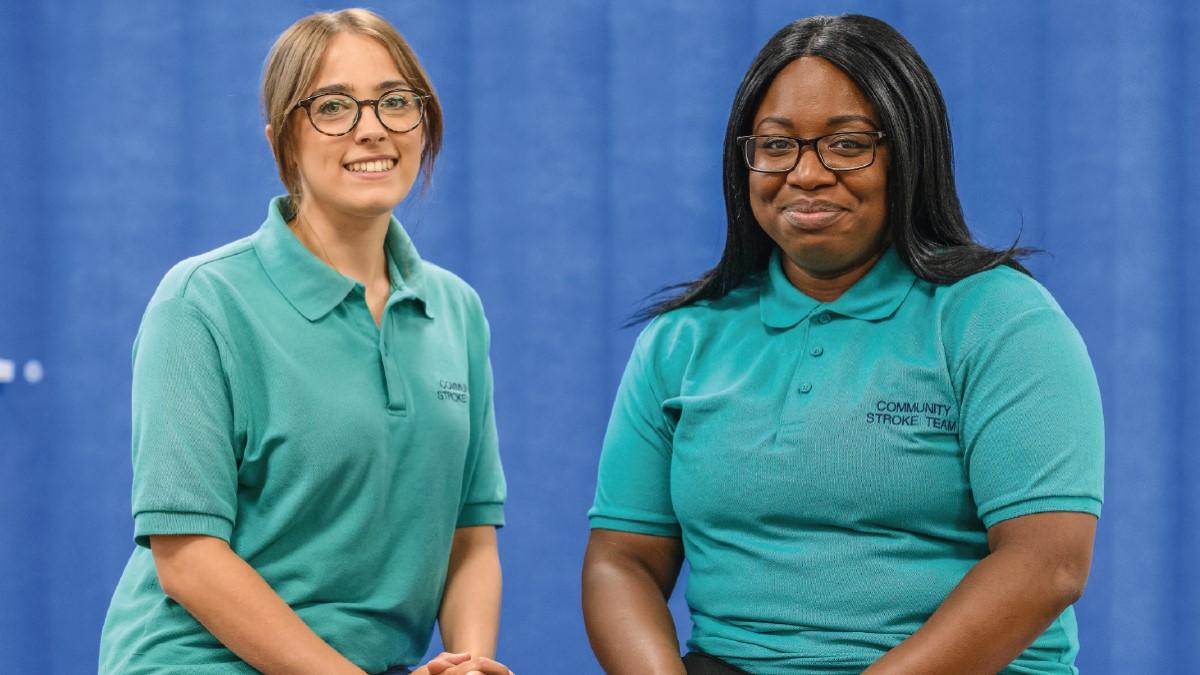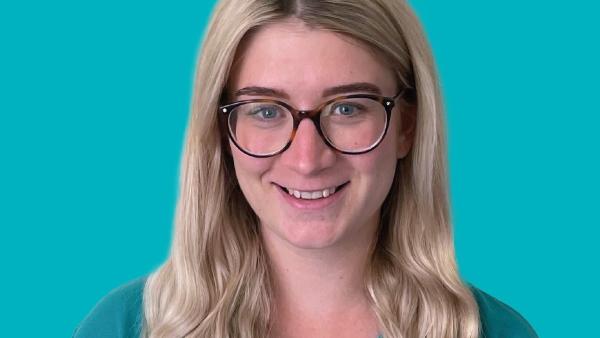Listening to patients and providing novel solutions is key to the innovative work of Northamptonshire’s community stroke team, as Mark Gould reports
For the Northamptonshire Community Stroke Team (CST), it’s all about ‘thrival’. The team’s aims and aspirations are that patients will ‘thrive not just survive’.
And patients seem to be doing just that with its intensive therapy regime, goal-based approach, self-guided care, and heavy reliance on listening to service users. Some 70 per cent of patients return to work thanks to its vocational rehab team, compared with the 50 per cent national average, and 100 per cent report total satisfaction with the service.
The team are also taking some of the burden off services like psychological support and social care. Instead of waiting a year or more for a psychologist referral, patients are now being seen within seven days by the team’s trained support workers. And their approach has reduced hospital readmissions due to accident or second stroke, and improved early discharge planning.
Incredibly, the multidisciplinary team has also managed to shave off 1.5 bed days per patient hospital length of stay which, as well as enabling patients to return home earlier, equates to a saving of over £108,000 a year.
The 65-strong CST team, which covers all of Northamptonshire, is made up of physiotherapists, occupational therapists, speech and language therapists, nurses, and rehab assistants.
Their work is part of one of three NHS England stroke rehabilitation pilots (the other two are in London and Northumbria).
Team lead physiotherapist Leanna Luxton says they provide intensive home-based, seven-day-a-week community therapy delivered by a specialist team.
Leanna says the pilot has been able to provide quantifiable evidence to its commissioner – the local integrated care board (ICB) – that has secured substantive funding. Despite being set up in the pandemic – and having to recruit and initially work online – the team was able to put together what Leanna describes as a ‘ground-breaking service that ticks a lot of boxes and also is really starting to make people think about how you can do things slightly differently’.
The ICB can see the pilot service’s benefit in terms of keeping preventing readmission, getting people out of bed quicker, and long-term benefits of returning to work.
Leanna says the extra funding conferred for pilot sites means they were able to combine peer support, care, reablement, vocational rehab and psychological wellbeing support for patients.
All patients are assessed at home by the team within 48 hours of referral from hospital. Based on their goals and condition patients are offered up to seven days a week intensive therapy and wellbeing support for an open-ended period. But the level of care varies from patient to patient.
The team was not able to recruit psychologists due to the fixed-term nature of the original pilot, so they decided that all staff train to level 2 diploma in conversational rehabilitation.
‘Getting initial psychological support was vital given year-long waits for psychological interventions support,’ Leanna said. It has also reduced demand on psychological referrals via GPs.
Leanna says the intensive and multidisciplinary approach – where patients can be seen three times a day for seven days means that ‘on average we see patients for only about two weeks and they don’t need anymore’.
Soft indicators
Normal service development work set ups, tests and embeds a service, then asks patients’ views. Instead the team interviewed more than 100 patients and 70 staff about their experience of the pathway. ‘Looking at it with their eyes and in their shoes, we really understand their experience.’
The team also developed a series of ‘experiential indicators’ – qualitative measures of outcomes – such as finding out the benefits for a patient of being able to go back to their knitting group.
‘What patients say about our service is that we are empathetic, kind, and knowledgeable,’ says Leanna.
‘We were so proud that patients told us we listened to them, communicate with them, and when we say we are going to do something we do it. That really makes their experience amazing.
In our satisfaction survey 100 per cent of patients said they were satisfied with the service and over 90 per cent feel we tailor the treatment to their goals, that we help them with self-management, we provide enough rehabilitation, and that we are supportive
The interviews fed into developing the team vision, which Leanna describes as ‘working in partnership with patients to provide them with the skills and resources they need to self-manage so that they can lead meaningful and fulfilling lives beyond their stroke.’
The team also set up a monthly patient forum which is based on various themes, such as vocational rehab, psychological support or peer support.
‘We listen to their stories and experiences – they will give their experiences and we will challenge ourselves to put the patient at the centre and pivot or change dependent on what they say. Usually, it’s a small thing but it can make a big difference to people.’
Peer support
Leanna says that peer support workers (PSWs) embedded in the team offer an extra weapon – visible evidence that there is quality life after a stroke.
Two Nottinghamshire patients who had strokes are now working as PSWs.
‘There is a difference between a therapist going in telling a patient that they should quit smoking due to their risk of another stroke, compared with a support worker saying “I went to this smoking cessation group and I found it really helpful because I used to smoke”.’
‘They are able to have those friendly peers to peer conversations. It’s also really empowering, motivating and inspiring to see someone who has had a stroke and has physical effects of that stroke, working and thriving,’ Leanna says.
PSWs now take over secondary prevention, information and support conversations with patients, freeing up clinical time of therapists who used to do talking.
The team’s website hub offers upper limb or exercise groups, speech groups and wellbeing groups – mindful art, yoga, Pilates, breathwork, and mindful motion.
Because patients said that going online for information ‘can be scary’ the team set up George’s Place - an online group where patients can meet and share thoughts and fears with a coach present.
Putting together a business case
The biggest job for the team was demonstrating its sustainability to the ICB – and doing that in a climate where there is no money around. They decided to do it by tracking the journey patients take and offering two contrasting scenarios.
Take the example of ‘John’: on the ‘normal’ pathway he would be seen by the CST at home within 48 hours, but he might have some anxiety and depression, and he might wish he could speak to other people. He goes online and finds that challenging. He goes to his GP and there is a long wait for psychological support. He achieves his goals but he still has unmet needs at six months, and as a result the GP and other providers in the system have to provide him with longer term support.
Whereas, the ‘John’ who is seen by the Northampton team, within the same timeframe, is also assessed for his wellbeing within 48 hours, Emily comes to see him for peer support and he has access to the online hub. He joins groups and he is able to have his wellbeing supported during his whole journey. He achieves his goals and wants to return to work. He sees the vocational rehab worker and participates in his community.
‘If you want the second option this is what it is going to cost but we can tick all these boxes on your priorities and agenda, and we can be a flagship model of how you provide holistic, system-wide community support and a model that can be applied to a whole range of other conditions,’ Leanna says.
If we can bring our patients out of hospital quicker and give them the support, they need so that they don’t need to access other care services, they return to work, feel happier, and more supported.
We are offering our experience and knowledge to other ICSs and specialist services around the country so they don’t have to keep rewriting the same things.’
Coaching programme
Using therapists to deliver wellbeing support hasn’t been done before. The team call it conversational rehab – coaching conversations to develop confidence, knowledge and experience so that people can self-direct their recovery when they are not face-to-face with therapists.
The team set up the pathway to recovery which enables the team to identify people who are in the red (crisis), amber (on a plateau and in need of confidence and motivation), or green (they are able to self-direct their rehab).
‘We are not going to be able to set goals for people who are in crisis. You need to be able to support them and help them to move into at least ‘coping’ – providing hands on rehabilitation into the amber and once there pushing people into green so that they can be discharged.’

The team developed ‘keys’ to unlock recovery – assessing patients’ physical environment, their physical health and mindset – how ready they are to recover – as a foundation point.
Patients say that when they have had a stroke the three things, they experience most are trauma around what has happened to them, anxiety about being in hospital and about the future – falling or having another stroke – and grief about what they have lost.
‘It’s vital to talk about those things because they affect resilience, confidence and purpose in life,’ added Leanna. Patients want therapists, nurses and people that they see every day to have the skills to talk to them about these things and make them realise they are normal.’
‘I want to transform how we think about rehabilitation when we think of it as that road to recovery. We love our jobs.
‘We set it up so it is enjoyable, we live and breathe our vision, we want our patients to have enjoyable lives.’
Vocational rehabilitation
Occupational Therapist Philly Smith is the lead vocational rehabilitation specialist and provides a vital role in helping patients either return to work or find an alternative role.
She says her work is exciting and rewarding, forging links between health and social care and talking to employers about getting people into work, and how they should respond when an employee has a stroke.
‘We provide support to stroke patients who may need support in getting back into their old roles, getting support in finding an alternative role, or they may need support in exiting their job entirely because they can no longer do it.’
She and a band 4 colleague help patients with job seeking, with their CVs, support interview preparation, and identify suitable roles that take into consideration the residual difficulties or disabilities they have.
The team also go into the workplace, educating them on getting patients back to work and how they respond when an employee has a stroke.
If a member of staff has a stroke my input helps employers deal with it in the right way so they can get valued employees back into work
‘I really enjoy it – it’s been really creative. We simulate someone’s job so that I can assess their skill and get them back in the zone of work.
‘The work that people are doing is just incredible – the fact that we get a chance to do it is mind blowing and amazing.’
Philly says the team is trying to get vocational rehab embedded across the county, but it can have its challenges – not least the battle to decide whether its health or social care in terms of the funding and the commissioning.
However, she is convinced the team has taken some of the burden off social care.
Rapid care reablement
Evie Wood, 27, is responsible for rapid care reablement – getting patients who have had a stroke in the last six months to become as independent as possible, such as washing, dressing and going to the toilet. The team sends rehab assistants to see patients following treatment plans set by physios or OTs. A rehab practitioner at band 4 can do assessments and administer procedures.
She said: ‘Reablement is something that I am really interested in and there were not any other services doing anything like this.
Elsewhere you have the problem of handing over to a range of different agencies. Before people would leave with a discharge package and stroke reablement work would be offered as something separate.’
Evie says the integration ‘kills two birds with one stone, a physio can go out to the wash and dress, and it can be done faster so the patient can do 10 sit and stands.
It’s bit of a challenge as it’s something new but really positive – really successful for patients – people receive really intensive therapy.’
The pilot has helped develop her management skills by ‘looking at the bigger picture’. ‘Key performance indicator data has been a real eye opener. Career development is great if you’ve the knowledge of what goes on behind the scenes.’
From stroke survivor to stroke thriver
Emily Toplis was in Kazakhstan in 2012 when she had her stroke. It paralysed the left side of her body, leaving her with no function or movement. She was repatriated back to the UK and into Northamptonshire General Hospital.
She is now a paid band 3 peer support worker. Her experiences of stroke rehab and aftercare 10 years ago are in stark contrast to today.
‘When I was discharged from the CST I fell off the proverbial cliff,’ she recalls.
‘I was given a lot of leaflets but very much felt I was being left to fend for myself. I didn’t know which way to turn. I’d lost my go-to resource for information from the stroke team and found that finding information on the internet was very difficult.
It took me a long time to realise that I had to take control of my life – managing day-to-day activities and rehab as well
‘Because mobility was an issue I found I had to come up with a plan B for most things. That is what I like the most about doing the job now – all the stress and heartache that I had can be put to good use with patients. I get told on a regular basis that I am a positive inspiration to people – showing them what is possible in spite of it all.
‘I am on a mission now. And because of the support that I have had and the job I do I now describe myself as a ‘stroke thriver’ – because being a survivor is not enough. I am on a mission to change the aim and language around stroke – to aim for thrival.’
She says she is also ‘very good at grounding therapists when they start not living in the real world’.
Emily said she can be gentle in her approach, but if the situation requires ‘I can also be brutal’.
Leanna said: ‘Emily is really entrenched in the guidelines and is the patient rep for the intercollegiate working party as well. We are very lucky to have her. The lived experience of patients is free but it is key to recovery. If you invest in it, you get really good outcomes for patients.’
Number of subscribers: 1


